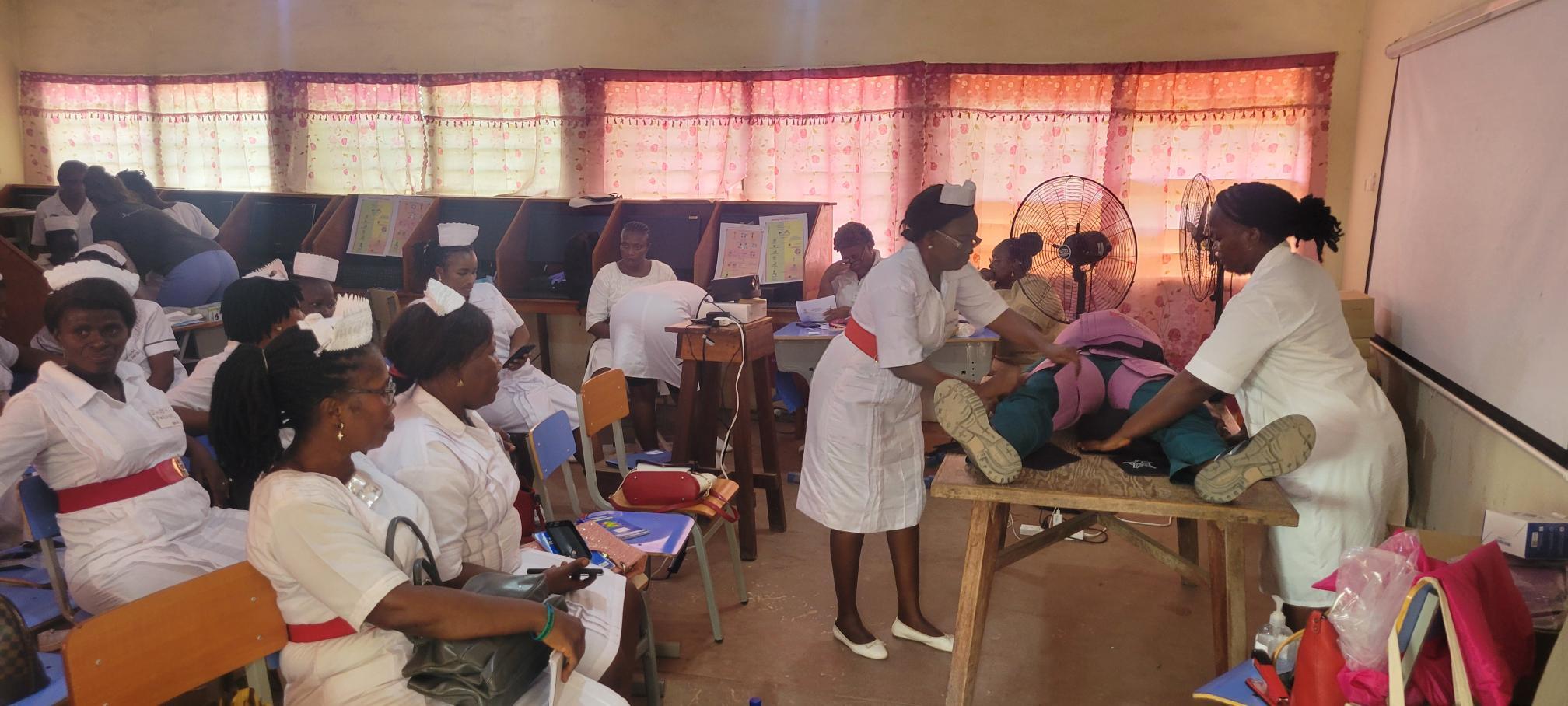Editor’s note: This article is sponsored by Johnson & Johnson Impact Ventures, which supports ImpactAlpha’s Investing in Health coverage. In partnership with J&J Impact Ventures, ImpactAlpha is exploring the market potential of impact investments in purpose-driven entrepreneurs working to improve health outcomes for underserved communities around the world.
Judd Staples at Innovations in Healthcare studies the ecosystems that support the scaling of innovative health solutions. Based on the findings of a recently released research brief, Staples describes how impact investors, funders and development finance institutions might coordinate their efforts and increase access to quality care in developing economies.
Over the last decade, we have seen impressive increases in investment and capital expenditure on healthcare in developing economies. Yet, they have not translated into overwhelmingly positive results. We remain woefully behind the United Nations’ Sustainable Development Goals for health outcomes. More than half the world’s population is blocked from receiving the essential healthcare services — the kind that many of us take for granted — they need to flourish. What explains this gap? The complexity of global healthcare means there are many reasons, but an enormous one is the troubling fact that capital does not reach, at the necessary scale, innovative health ventures building sustainable solutions for impact in developing economies.
To unpack this, my colleagues at Innovations in Healthcare and I spoke with impact investors about their investment approaches. Our interviews revealed a complex web of actors, each with unique investment models, successfully identifying opportunities and placing investment capital in ways that generated both financial and social returns. However, we found that stakeholders often had an incomplete understanding of how their investment approaches fit within the broader investment ecosystem. We also found that key field-wide infrastructural pieces enabling them to optimize deal development and execution are missing. As a result, funders struggle to collaborate while enterprises struggle to remain mission-aligned at every stage of growth.
Investment approaches vary, making optimal alignment on investees’ needs difficult
While early- and growth-stage health impact funders might share a common outward philosophy, and may describe themselves using similar language, their investment criteria and approach to deploying capital varies considerably. Many investors with mission-oriented capital providers prioritize investing in business models that improve access within target populations and seek only capital conservation at the portfolio level; other investors with capital providers seeking at-market financial returns prioritize business models with lower financial risk while meeting a “hurdle rate” for social returns.
Investors and grant funders often lack clarity about their own roles in their investees’ growth path. When multiple impact investors and grant funders finance a venture, either in syndication or sequentially, all too often they fail to coordinate their expectations on operational and financial priorities. This contributes to imperfectly aligned composite financing arrangements: mission-aligned capital providing technical assistance and subsidizing returns based on impact outcomes achieved, alongside investors seeking financial returns at market rates. This often leads to deals taking six to 12 or more months to close. Consequently, ventures struggle to find the resources to support their growth in a timely manner, earlier investors experience delays in investment maturity, and later-stage investors struggle to identify mature ventures.
“Currently, coordination between funders is inconsistent and, as a result, ventures inefficiently patch together funding plans from organizations that are not in optimal alignment with either each other or the venture’s long-term financial sustainability and social impact mission. In addition, they spend time tracking and reporting multiple sets of impact metrics.”
– Judd Staples, Eunice Mutindi, Sowmya Rajan in “Accelerating the Impact of Private Investments in Health Ventures in Developing Economies“
Health impact investors also struggle to coordinate the measurement of their investments’ impact. In our study, we found no two organizations had the same criteria. For ventures, this misalignment can lead to potential loss of operational focus and conflicting post-investment reporting requirements, severely limiting any centralized effort to roll up overall impact across the sector.
Repeat this process at each stage of growth, and one can see why investment volumes are not meeting the levels necessary to meet the United Nations’ SDG goals for health outcomes.
What we need to reach greater alignment — and ultimately greater impact
In order to realize the full potential of the capital deployed and attract the incremental capital inflows necessary to meet the UN’s SDG goals, a health investment coalition is needed to enhance deal sharing, facilitate funding transitions and support the collective research necessary. A health impact investment coalition would:
- Serve as a convening body, enabling impact investors to pool and coordinate resources for the common activities deployed in the identification, evaluation and support of health ventures.
- Centralize and coordinate the impact assessment process, including development of metrics, facilitating centralized reporting, retention and validation of baseline and post-investment impact data.
- Provide curated introductions to potential co-funders and supporting resources, including access to information on comparable deals and successful blended financing structures.
- Coordinate the deployment of capital within and between investment rounds to maximize their long-term social impact.
This would vastly improve the efficiency and efficacy of capital placement in impactful health ventures in developing markets. Important strides in this direction are being made by several parties. For example, Baraka Impact Finance recently announced the “beta launch” of Baraka Analytics, through which investors can access in-depth profiles of promising health ventures and coordinate with other funders and stakeholders. In addition, the Impact Investment Initiative for Global Health was launched in October to raise awareness and share best practices on impact investment in global health in low- and middle-income countries.
At Innovations in Healthcare, we are laying the groundwork for the formation of the Health Impact Investor Coalition to provide a platform for funders to come together to coordinate capital deployment and impact assessment at each stage of funding for promising new health ventures. We encourage investors to consider how they can participate and contribute to this momentum. Ultimately, an increase in intentional, coordinated action would significantly, positively impact the industry’s ability to gain ground back in increasing access to quality healthcare and saving more lives.
In our interviews with investors, we heard about financing pitfalls and coordination opportunities. Learn more in our report brief, “Accelerating the Impact of Private Investments in Health Ventures in Developing Economies,” funded by Johnson & Johnson Impact Ventures, an impact fund within the Johnson & Johnson Foundation.












